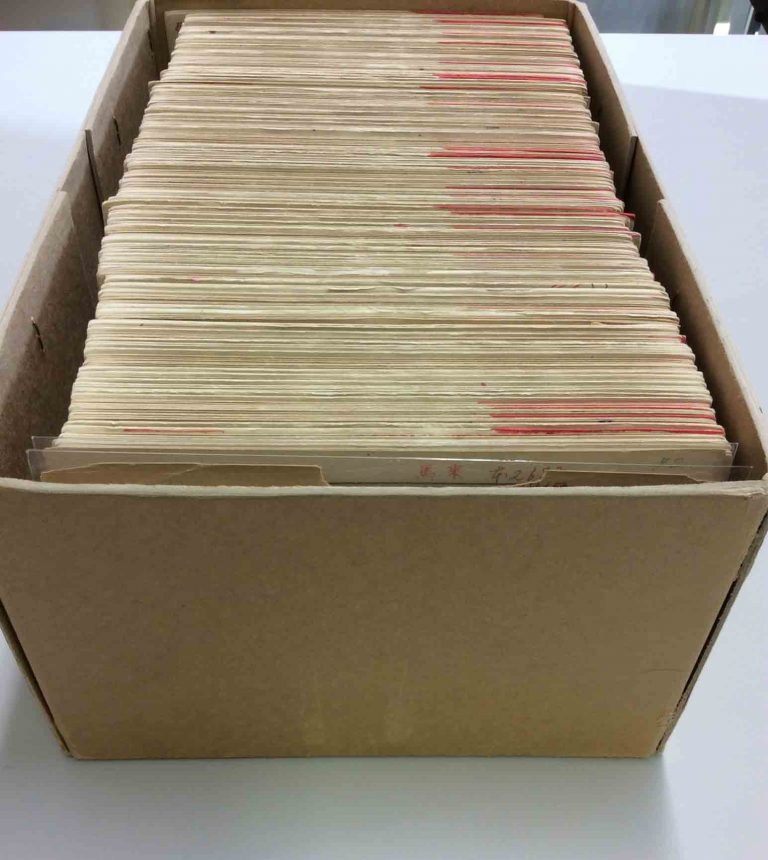Polyester or polyethylene envelopes, rather than other plastics such as polyvinylchloride (PVC), are used in conservation because they do not react with documents, or degrade or yellow over time. In contrast, PVC produces hydrochloric acid as it degrades and when kept in poor conditions it can melt or stick to photos and papers.
We use polyester and polyethylene enclosures as a preservation method here at The National Archives. One series that has received this type of treatment is the paper index cards found in WO 345.
WO 345 is a War Office series of about 50,000 Japanese index cards of Allied prisoners of war and internees from the Second World War. The cards record detailed information about prisoners of war so they are of great interest to family researchers. A common problem found in this series is the fragility and yellowing of the cards due to the poor quality paper. Some of these cards have been torn or fragmented over time.
In order to protect fragmented cards from further damage we are enclosing the most at risk in polyester. Polyester keeps the fragmented documents together, minimises the risk of further physical damage and keeps the paper index cards accessible for readers to request.
Protecting records in this way isn’t just applicable to the records here at The National Archives – it can also help you care for your collections at home. To best protect your collection, make sure when you purchase envelopes or folders you look for polyester or polyethylene on the packaging. If you have previously encapsulated any of your collection particularly before the 1990s this could be PVC, and if the plastic is yellowing this is a telling sign.



Thats fine except, as you have demonstrated, it makes them difficult to photograph because of the glare.
As an additional observation, many of the ‘dragons’ as I think of them, flapping around the reading rooms spying out for any unsuspected violations so they can swoop down and devour a happy meal of guilty reader indulging on some document touch or damaging the paper with their laser vision are often under the delution that the plastic sleeves are there to protect the photos. thats mostly incorrect, as they are there to hold the photos in the folders. I see lots of photos that are not in sleeves, for example when they are in folded bundles or just loose. I can appreciate that they also protect phots, but they are mainly to keep them tagged in the documents. However, if you even dream of taking them out, it wont be too long before an corrections officer will swoop down out of the either to inform you that YOU CANT DO THAT, the sleeves are there to protect them. Wrong wrong wrong. Not that I care, I dont take them out anymore. But I see loads of other people that do. And frustratingly they never get swooped upon.
You need glare proof plastic or special layflat plastic plates that can be overlaid to prevent galre.
Hi Brooke
We are extremely fortunate to have a dedicated security team with their main objective being to protect the collection here. The National Archives seeks to preserve the collection for as long as possible for all people. The clear polyester sleeves are primarily there to protect the photos and this choice is made for the preservation of the photo. Many of these polyester sleeves are actually sealed, but for those that are not we ask that the photos are not removed from the sleeve to reduce the risk of damage to the photo surface during removal and re-insertion. If we had the means we would encapsulate all our photographic collection! In this instance we took the photo at an angle so you could see the reflection from the polyester. However, it is possible to take photos without reflection either through angle or camera function. If you cannot obtain a good photograph in the reading room you could consider using our record copying service.